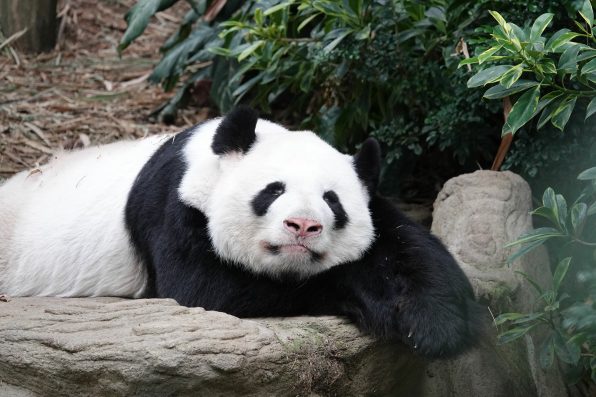Qinling Pandas Are Rare, And Only A Dozen Have Ever Been Recorded

You’ve heard of red pandas and the typical black and white ones, of course. But did you know that there are brown pandas, too?
Apparently, they come in more colors than one would think. A subspecies of giant pandas called Qinling pandas can have a combination of dark and light brown fur. These creatures are rare, though. Only about a dozen have ever been recorded.
The first documented Qinling panda was found by a local ranger in the Qinling Mountains of the Shaanxi province in 1985.
The panda was a female named Dandan. She was taken to the Qinling Wildlife Zoo and remained there until her death in 2000.
In 2005, Qinling pandas were officially recognized as a subspecies. Their diet, behavior, features, and habitat are similar to giant pandas.
For instance, they both spend most of their days eating bamboo stalks. But Qinling pandas are a bit smaller in size, and they have brown spots underneath their eyes instead of patches around them.
According to research, Qinling pandas may have genetically separated from giant pandas in the Sichuan region approximately 300,000 years ago.
Most Qinling pandas are black and white, but some have a brown hue for reasons that researchers have been unable to explain until now.
In 2024, a team of scientists solved the mystery of the brown fur. The team sequenced the genome of a brown panda named Qi Zai.

Bertram Lee/Wirestock Creators – stock.adobe.com – illustrative purposes only
He was captured in 2009 and brought to the Foping Nature Reserve in Shaanxi, where he lives with his mother. Overall, they sequenced the genomes of 35 giant pandas. Among the group were two brown ones.
They found that the unusual brown coloring was due to a missing sequence in the pandas’ DNA. Qinling pandas have a mutation in a gene called Bace2.
It is related to pigmentation. Another 192 black and white pandas were tested, and none of them had that version of Bace2.
The interesting part is that Qi Zai is brown, but his mother is black and white. The researchers think that Qinling pandas have a dominant gene for black and white coloration and a recessive gene for brown hues. Both parents must carry the recessive gene for a brown panda to be born.
The scientists also examined preserved tissue from Dandan and discovered that she had the same recessive trait as Qi Zai.
The findings were significant for genetic research, as it was the first time that a missing genetic sequence was linked to color variation.
The brown fur of the Qinling pandas is the result of inbreeding. The population lives in isolation at altitudes of 4,000 to 10,000 feet in the Qinling Mountains, which has allowed the brown coloration to be passed down for generations. It is estimated that between 200 and 300 Qinling pandas live in the wild today.
Sign up for Chip Chick’s newsletter and get stories like this delivered to your inbox.
More About:Animals